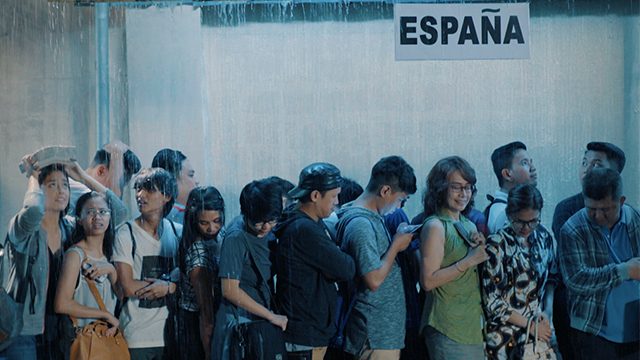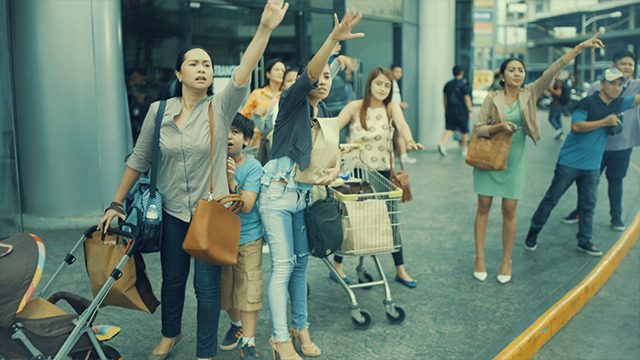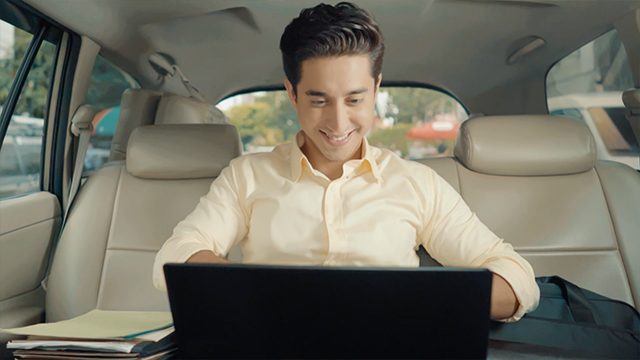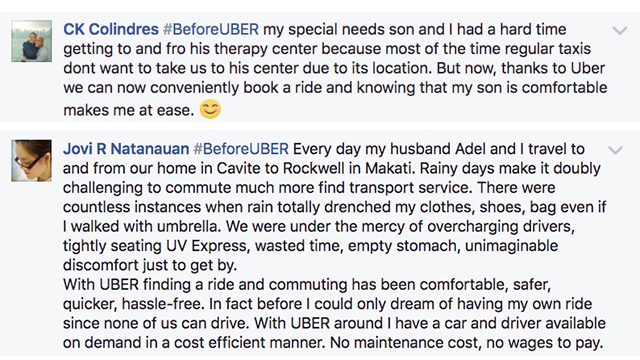SUMMARY
This is AI generated summarization, which may have errors. For context, always refer to the full article.

MANILA, Philippines – Traffic in Metro Manila is the bane of every commuter’s existence.
On average, we spend so much time on the road – around 6 hours a day, to be exact – that could have been spent resting, being with family, or doing something more productive.
Saturday traffic is the worst anywhere in Metro Manila. ☹ https://t.co/pGAPAiEeKR
— carl (@gowcarl) June 3, 2017
You can’t really predict traffic here in Metro Manila. Left home at around 6 and im still not near a fouth to my way to work
— Tin A. Catu-Niñalga (@engrtin) September 4, 2016
But there’s only so much we can do while we wait for a solution to worsening traffic conditions. Fixing the problem requires transforming the public transport system through consolidated, long-term efforts. (READ: With emergency powers, lighter Metro Manila traffic by 2019)
In the meantime, smartphones and apps have become travel necessities. They not only help us while away the hours on the road but also make our general commuting life safer and more convenient.
Soundtrip bliss amidst the horrendous Fri metro manila traffic. Thank you spotify. My heart is happy and so are my ears.
— Mat Rabena (@Matrabena) April 11, 2014
I am very grateful as a commuter na makita ang iilang bus sa metro manila na may CCTV. It really makes us more secure.@MMDA @LTFRB @gmanews
— jennifer basas (@akemi_shadow) April 3, 2016
Google Maps now displaying traffic info in Metro Manila same with Waze. Nice! [pic] — https://t.co/ztFx6j4km0
— Gary Calpito (@garyboi84) November 22, 2015
Democratizing access to transportation

Not too long ago, commuters had to rely exclusively on taking multiple modes of transportation, or aspiring to buy their own vehicles if they wanted full control of their rides. These options can be time-consuming and expensive.
On bad days, say, the evening rush hour made even worse by a sudden downpour, one can spend hours on the road just driving or trying to get a ride.
Today’s technology has made it possible for reliable transportation options in the city to be more accessible for anybody, anywhere at just a tap of a smartphone.
Thus, Filipinos have embraced ridesharing services such as Uber, which offer easy access to rides, with the safety, reliability, and convenience that private cars offer (without actually having to acquire one). It’s especially useful for those who live in areas that aren’t along routes of major public transport options.
Many have become so reliant on the app, especially since unlike other ridesharing services, Uber doesn’t reveal trip destinations or travel time to drivers before pick-up. This ensures that all riders have equal access to the service.

Rappler and Uber Philippines launched the #BeforeUBER campaign last June 21 to crowdsource stories about commuting life before the app arrived in the Philippines four years ago.
Uber riders and partners (as passengers and drivers are called) were eager to share their stories. The hashtag trended 2nd in the Philippines an hour after the launch.
I used to wait for jeepneys when I’ve to report at work because it is limited on holidays. But now, say no more to waiting. #beforeuber pic.twitter.com/SDpyv9we2O
— Clifford Abalos (@itsmeford) June 25, 2017
#BeforeUBER I had to walk a long way to the terminal or wait for taxi (even get rejected due to distance) in order to get a ride. @Uber_PH
— (@ChevyPanlilio) June 26, 2017
#Uber_PH #beforeUBER I used to get rejected several times… Papara ka, hihinto, pero lalayas din walang pasabi.. Daig pa chicks mangbasted. pic.twitter.com/WULlsZzjK9
— John Martin (@zupermartinuz) June 23, 2017
#BeforeUBER, I have no choice but to take the airport taxi going home. With @Uber_PH, I get to save almost 65% of my fare. pic.twitter.com/Zs7cXUiYOD
— ceeesquared (@c_s_q_u_a_r_e_d) June 23, 2017
#BeforeUBER "Wag na natin i-metro ma’am. 400 nalang po, traffic kasi doon eh"
— Ja (@jajajajaniel) June 22, 2017
Why has Uber been so successful? It gives commuters a safe, convenient, and comfortable ride. For many of its users, the ride hailing app has come to mean more than just a way to get around.
#BeforeUBER I felt unsafe whenever I’m inside a cab, and would tweet out the plate number, and call my mom just to tell her I’m in a cab
— Pau Velasco (@LightningRawd) June 23, 2017
#BeforeUber, I had to research how to get to a place for the first time and expect getting lost. Now, I can relax & wait for my drop off.
— Jane (@dhampirjane) June 24, 2017
#BeforeUber, lagi ako takot mag isa sa bahay lalo na nung pregnant ako. Nagbleeding ako and I had to rush (drive) myself to the ER.
— Jade & the City (@jadeandthecity) June 23, 2017

Working students or employees now have a chance to be more efficient and productive, to look more presentable when they arrive at work or school, or to get a little shut-eye even as they go through the inevitable traffic.
I can sleep more during work days since I don’t need to wake up early & walk 7 blocks away and wait for a cab #beforeUBER
— Rj (@RjRaquinioJr) June 23, 2017
#BeforeUBER "Haggard" lalabas ako ng bahay ng fresh. Makakapasok sa school ng hulas,haggard.
— Eds (@Sonimnan) June 23, 2017
Dati pinipilit ko pang sumiksik sa bus kahit nasa pinto na ko para lang makasakay at di malate. Papasok palang amoy pauwi na. #beforeUBER
— AJ ツ (@EiJEYdelacruz) June 22, 2017
At best, a simple ride can even end up changing one’s perspective as riders and partners end up sharing personal stories during the trip.
Even existing car owners benefit from Uber, too, as it eases their worries of a perennial problem: finding parking space at establishments and other places.
My Family & I book our rides with Uber all the time, its hassle-free & safer! #BeforeUBER we always encounter parking space problems. pic.twitter.com/ritnXuMGTq
— Fifth Pagotan (@FifthSolomon) June 25, 2017
#BeforeUBER, parking was really one of my worries whenever I go to malls for groceries or shopping. Now,Thanks to Uber its just one tap away pic.twitter.com/Gct2jn4UCA
— Isabel Oli Prats 心心 (@IsabelOliPrats) June 25, 2017
#BeforeUBER, I needed to look for parking. Now, go lang ng go pag baba ng car! All smile kami mag Uber joy ride! diba?Todo na uber! pic.twitter.com/nvjeG3qqD0
— rufamaequinto (@imrufamaequinto) June 25, 2017
Commuting around the Metro is notoriously difficult, but when we embrace technology and use it to our advantage, we can make it more bearable and less of an inconvenience.
How about you? How do you combat Metro Manila traffic through your smartphone? Do you still remember what your life was like #BeforeUBER? – Rappler.com
Add a comment
How does this make you feel?
There are no comments yet. Add your comment to start the conversation.